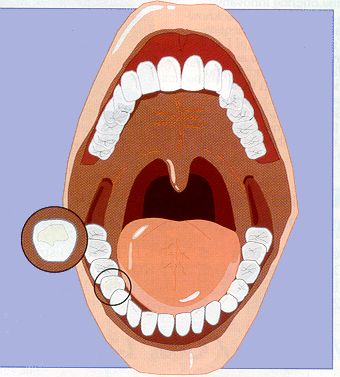Composite resins

What is a composite resin (white filling)?
A composite resin is a tooth-colored plastic mixture filled with glass (silicon
dioxide). Introduced in the 1960s, dental composites were confined to the front
teeth because they were not strong enough to withstand the pressure and wear
generated by the back teeth. Since then, composites have been significantly
improved and can be successfully placed in the back teeth as well. Composites
are not only used for restoring decay, but are also used for cosmetic
improvements of the smile by changing the color of the teeth or reshaping
disfigured teeth. How is a composite placed?
Following preparation, the dentist places the composite in layers, using a
light specialized to harden each layer. When the process is finished, the
dentist will shape the composite to fit the tooth. The dentist then polishes
the composite to prevent staining and early wear.
How long does it take to place a composite?
It takes the dentist about 10-20 minutes longer to place a composite than a
silver filling. Placement time depends on the size and location of the cavity.
The larger the size, the longer it will take.
What is the cost?
Prices vary, but composites average about one-and-a-half to two times the price
of a silver filling. Most dental insurance plans cover the cost of the
composite up to the price of a silver filling, with the patient paying the
difference. As composites continue to improve, insurance companies are more
likely to improve their coverage of composites.
What are the advantages of composites?
Esthetics are the main advantage, since dentists can blend shades to create a
color nearly identical to that of the actual tooth. Composites bond to the
tooth to support the remaining tooth structure, which helps to prevent breakage
and insulate the tooth from excessive temperature changes.
What are the disadvantages?
After receiving a composite, a patient may experience post-operative
sensitivity. Also, the shade of the composite can change slightly if the
patient drinks tea, coffee or other staining foods. The dentist can put a clear
plastic coating over the composite to prevent the color from changing if a
patient is particularly concerned about tooth color. Composites tend to wear
out sooner than silver fillings in larger cavities, although they hold up as
well in small cavities.
How long will a composite last?
Studies have shown that composites last 7-10 years, which is comparable to
silver fillings except in very large restorations, where silver fillings last
longer than composites.
Sources:
AGD President E. "Mac" Edington, DDS;
"Aesthetic Guidelines for Posterior Composite Restorations,"
by Paul R. Chalifoux, DDS, The Aesthetic Chronicle, 1996;
"Posterior Restorations: Change, Challenge and Controversy,"
Shane N. White, BdentSc, MS, MA, California Dental Journal, September, 1996.
|


